
Iconic treks to Machu Picchu, Kilimanjaro, and Everest Base Camp are top adventure seekers’ bucket lists. Even though they are spread across three continents, each thrilling adventure is undeniably worth the experience. So, the question remains: which trek should you go for? To make your choice easier and avoid trekking difficulties, we prepared this article describing the Machu Picchu trek vs Kilimanjaro trek vs Everest Base Camp trek.
This article explores and compares Machu Picchu, Everest Base Camp, and Mt Kilimanjaro, addressing all the significant subjects. You can decide which is best for your experience and adventure.
Comparison between Machu Picchu, Kilimanjaro and Everest
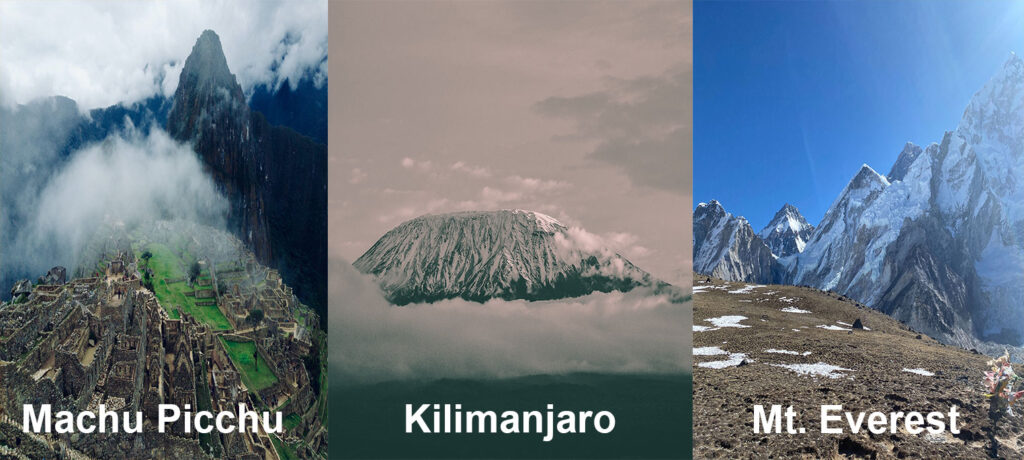
When comparing the Machu Picchu trek vs Everest Base Camp trek vs Kilimanjaro trek, it is essential to take note of the variations in routes, the duration of each trek, and the necessity of acclimatization. Additionally, it is advisable to be well-informed about the optimal seasons for embarking on the Machu Picchu Trek, Everest Base Camp trek, or Kilimanjaro trek. How about the religion, culture, difference in rate, and value in all three destinations?
All three trek points are the most popular destinations in their respective countries.
Located in
Machu Picchu (Inca Trails): Peru
Kilimanjaro ( Machama route): Tanzania
Everest Base Camp: Nepal
There are different routes or trails that you can take to reach Machu Picchu, Kilimanjaro, or Everest Base Camp. We will describe the most popular routes in this article.
- Machu Picchu: 4 days of trekking
- Kilimanjaro: 7 days Machama route
- Everest Base camp: 9-11 days
Altitude
If you aim to reach high altitudes, the Kilimanjaro trek and the Everest Base Camp trek are ideal choices. The Kilimanjaro trek reaches a maximum altitude of 5,896 meters. In contrast, the Everest Base Camp trek allows you to experience a sunrise tour on the Kala Patthar viewpoint, reaching a height of 5,545 meters and providing breathtaking views of Mt Everest and its other peaks.
In contrast, the Machu Picchu only reaches a maximum altitude of 4,215 meters at the renowned Dead Woman’s Pass. When comparing the difficulty levels of Machu Picchu, Mt Kilimanjaro, and Everest Base Camp, it is evident that the Everest Base Camp trek is slightly more challenging. The Macha Picchu presents trekkers with steeper climbs, leading to increased fatigue along the trail.
Weather
On the other hand, Kilimanjaro poses harsh conditions and has seen many unsuccessful attempts. Overall, each trek offers its unique challenges and rewards. Whether you choose the Macha Picchu trek, Kilimanjaro trek, or the Everest Base Camp trek, you will venture on a memorable adventure.
The main concern while undertaking the Everest Base Camp trek and the Kilimanjaro trek is the possibility of Acute Mountain Sickness. To mitigate this risk, it is crucial to diligently follow the designated itinerary and ensure that the planned acclimatization days at Namche Bazaar (3,440m) and Dingboche (4,450m) are not overlooked.
Itineraries
Machu Picchu Trek
The Inca trail is the favorite trekking route in Machu Picchu, located in Peru. It is one of the ancient Aztec Empire’s largest and most historical ruins. It is a 4 day hike or trek.
Day 1: Arrival at Cusco
Day 2: Hoke on Ollantaytambo
Day 3: Start the Inca Trail
Day 4: Inca Trail
Day 5: Inca Trail
Day 6: Machu Picchu + train ride back to Cusco
Note: Only 200 hikers and trekkers are allowed per day on the Inca trail. So, if you plan for the Machu Picchu trek, we advise you to book in advance to guarantee an opening.
Kilimanjaro Trek
The famous dormant volcano, Mt Kilimanjaro, is a well-known landmark in Tanzania. Its towering presence, with a crater rim reaching an impressive 5,896 metres, positions it among the world’s tallest volcanoes.
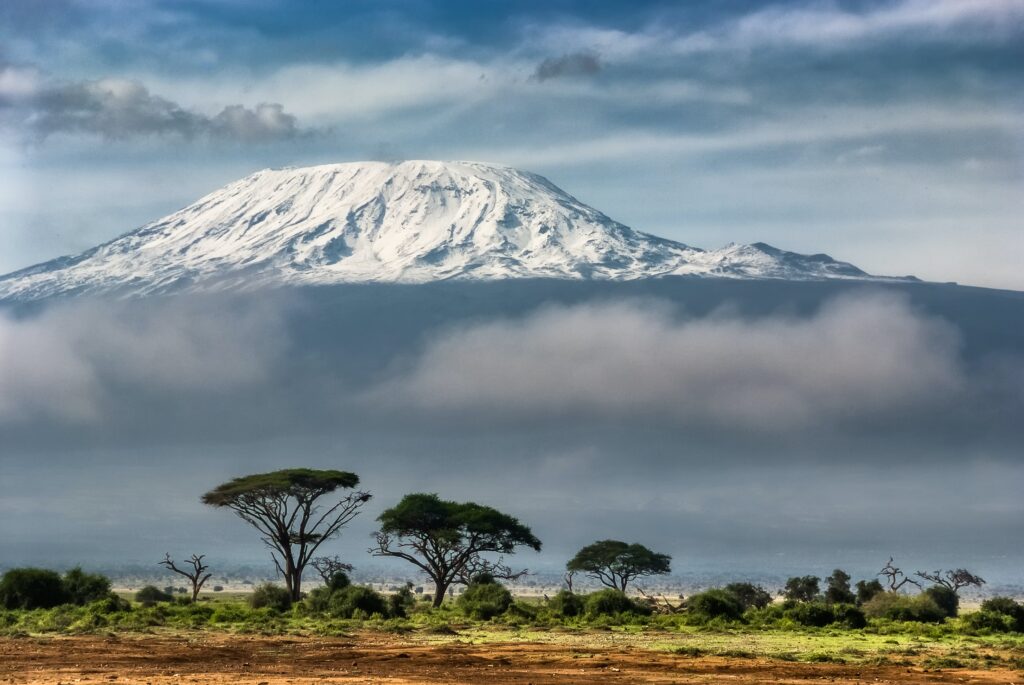
Additionally, it has gained popularity as a sought-after trekking spot, attracting adventurers from around the globe. In Kilimanjaro, facilities are limited, as you can expect from a trek like this, and the risk of AMS is there. So make sure to trek with a proper guide and instructions. The 7-day Machama route is the best option for the Kilimanjaro trek.
Day 1: Machama Gate trek to Machama Camp
Day 2: Trek to Shira Camp
Day 3: Trek to Barranco Camp via the Lava Tower
Day 4: Trek to Karanga Camp
Day 5: Trek to Barafu Camp
Day 6: Trek to Mount Kilimanjaro and down to Mweka Camp
Day 7: Drive to Mwosi
Note: Prepare yourself physically and mentally for this trek.
Everest Base Camp Trek
Everest Base Camp Trek is one of Nepal’s favorite and popular treks in the world. Starting the trek from Lukla, recognized as the 38th highest airport worldwide, one proceeds with a short journey towards Phakding. From Here on, the trail enters Namche Bazaar and the Sagarmatha National Park.
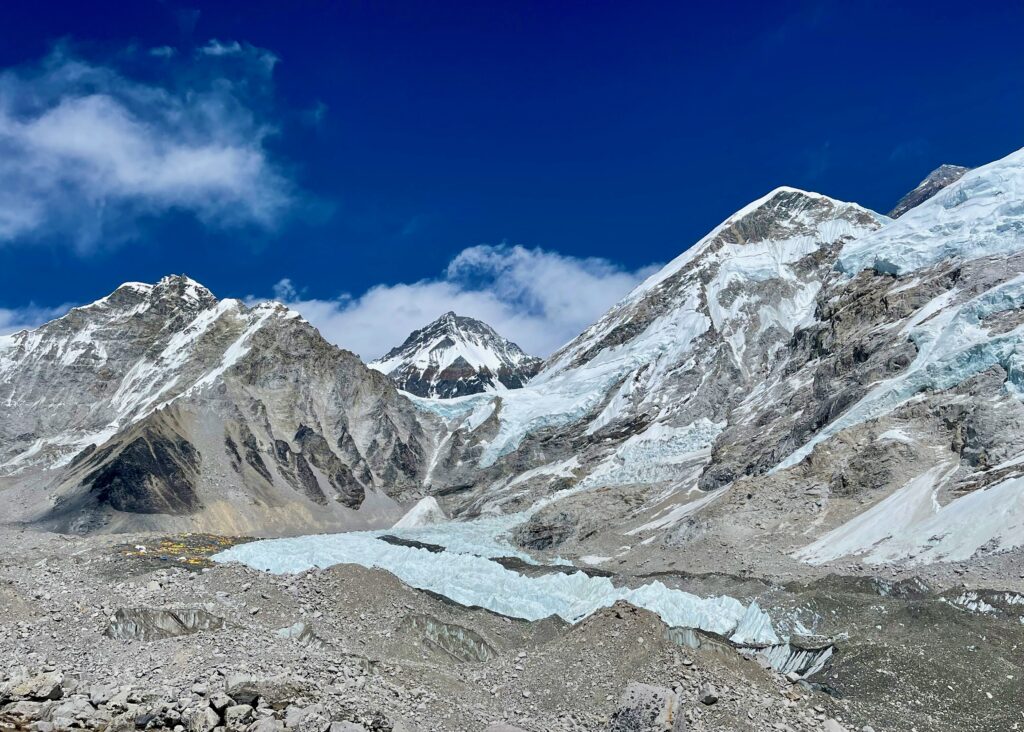
Along your journey, the landscape reveals a mesmerizing sight of snowcapped white mountains and towering peaks surpassing 6,000m/19,685ft! Among these natural wonders, you will come across Mt Amadablam (6,812m/22,349ft), Mt Lhotse (8,516m/27,940ft), Mt Nuptse (7,861m/25,791ft), and the legendary Mt Everest, the highest mountain in the world, proudly towering at 8,849m/29,032ft.
Day 1: Arrival in Kathmandu
Day 2: Fly to Lukla and trek to Phakding
Day 3: Trek to Namche Bazaar
Day 4: Namche Bazaar is a rest day for acclimatization and a short hikeDay 5: Trek to Tengboch
Day 6: Trek to Dingboche
Day 7: Rest day at Dingboche for an acclimatization
Day 8: Trek to Lobuche
Day 9: Trek To Everest Base Camp 5,364 m past Gorakshep
Day 10: Hike from Gorak Shep to Kala Patthar (5,545m) and Trek from Gorak Shep to Pheriche
Day 11: Trek from Pheriche to Namche
Day 12: Trek from Namche to Lukla
Day 13: Flight to Kathmandu
Day 14: Final departure for International flight homeward bound
Note: Before you can plan to trek Everest Base Camp. It would help if you were prepared and well-researched about the difficulty of this trek. The Everest Base Camp trek is an advanced route, so you need excellent physical and mental fitness.
Seasons
Before choosing between Machu Picchu Trek Vs Kilimanjaro Trek Vs Everest Base Camp Trek, you must know which season is suitable for your trek plan. Each climate had its own best season and less crowded seasons. The best time to go to Machu Picchu or Kilimanjaro or Everest Base Camp trek have a look below to find out,
Machu Picchu
Most visitors and trekkers take the Inca Trail or wander around Machu Picchu during July and August which is the peak season. We suggest booking your Machu Picchu trip in April or May when the crowds are thinner and the skies are clear for a more peaceful visit and picturesque views.
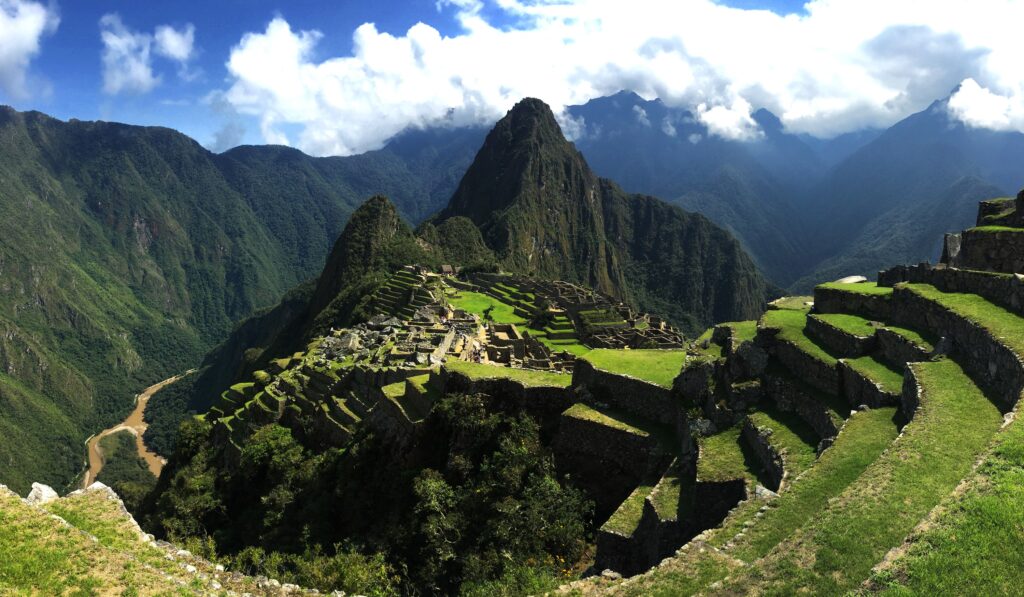
Kilimanjaro
If you are seeking the perfect time to scale Kilimanjaro, look at the dry months of December to mid-March and mid-June to the end of October. These months provide climbers with the best weather conditions, clear skies, breathtaking views, limited rainfall, and ample sunshine.
Unlike the Himalayas, Kilimanjaro has no closure periods, allowing trekkers to explore its beauty year-round. Nevertheless, it is essential to be well-prepared for the journey. Please note that climbs are generally not offered in April/May and November.
Everest Base Camp
Travelling in the best season offers a clear view of the Himalayan range, glaciers, villages, forests, rivers, and clear blue sky. The routes and weather become clear and favorable, making the journey safe and adventurous.
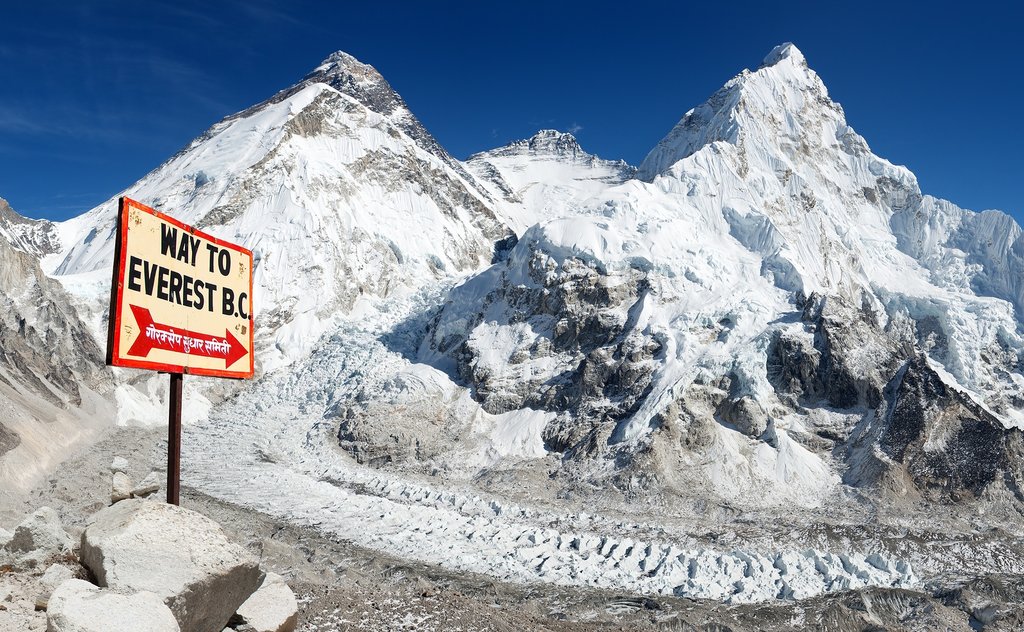
Everest Base Camp Trek’s best season is broken into two distinct seasons, i.e. spring and autumn. For the ultimate Everest Base Camp trek experience, we highly recommend booking your trip during either the spring or fall/autumn seasons.
Accommodation and Meal
Your staying place and meals greatly impact your experience on every journey. Accommodation and meals at Machu Picchu vs Kilimanjaro vs Everest Base Camp differ greatly. We are talking about three different cultures and religions.
For Machu Picchu: During your trip, you will primarily be accommodated in tented camps, except for your stay in Cusco, where you will have the option of hotels and lodges. As you explore South America, be prepared to savor the flavors of tropical cuisine. During the Inca trail, groups will be served their meals in a generously sized tent.
For Kilimanjaro: Accommodation in Kilimanjaro typically consists of twin rooms with shared facilities. Sometimes, triple rooms may also be available depending on the hotel’s capacity. In Kilimanjaro, you can savor the delightful local cuisine. The hotel offers extensive dishes, from rice and curry to vegetarian options, along with mouthwatering chicken and meat dishes.
For Everest Base Camp: The Everest Base Camp Trek promises an extraordinary blend of local culture and genuine hospitality, providing an unforgettable experience. Along the trail, teahouses serve as the primary form of accommodation, providing a warm and comfortable haven to unwind and recharge after a strenuous day of trekking.
Dal Bhat, a traditional Nepali dish, is widely consumed by trekkers as a staple meal. This nutritious and filling meal comprises lentil soup, rice and a variety of vegetable or meat curries. Its ability to provide the essential energy required for trekking makes it a prevalent choice, easily accessible in tea houses along the trekking trails.
Conclusion
The lure of the iconic treks to Machu Picchu, Kilimanjaro, and Everest Base Camp lure adventure seekers with their promising attractions. From stunning vistas and unique cultural experiences to an incomparable sense of achievement upon reaching the summits, it’s awe-inspiring.
While each trek presents its challenges and rewards, they all provide travelers inward for reflection as much as onward for exploration. As boots meet homeward-bound trails, wanderers carry more than spectacular photos and bragging rights in their wake. They carry cherished memories and transformed perspectives to last far beyond crossing the final items off well-worn bucket lists.
Wherever your wings may sweep you next, rediscover the magnitude of our world’s majestic realms and the human spirit’s desire to connect to them.
Posted on



